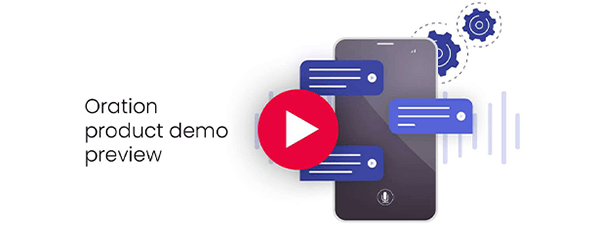Customers today have so much more choice when it comes to how they engage with brands – with SMS, email and interaction through social media becoming increasingly popular methods for seeking information and support. But while the modern contact centre is evolving to better serve the needs and preferences of tech-savvy customers, chatting over the phone is still the top choice for many of us. A study shows that over three-quarters (76%) of consumers prefer the traditional method of making a phone call to engage with customer service staff.
With hearing the voice of a real person still a high priority for so many customers, most organisations face the task of evaluating the role of contact centres in their business including whether they should be investing in both outbound and inbound contact centres. To help you make the right choice for your business, here’s an explanation of what an inbound contact centre is versus an outbound contact centre, as well as the key differences and how they operate.
What is an inbound contact centre?
An inbound contact centre allows customers to quickly access support over the phone by dialling a dedicated customer service number. Cloud-based inbound contact centre software like Oration by Convai ensures customers reach the most appropriate resolution for their query in the fastest time by automatically routing the call based on a customer's natural response to a greeting like “How may I help you today?”.
Inbound contact centre solutions like Oration are designed to help businesses manage inbound calls most efficiently – minimising the resources required to handle calls and ultimately lowering the cost of operating.
Delivering an excellent customer experience is the primary goal for any inbound contact centre because giving customers timely and efficient support when they need it most can be critical to driving future sales, increasing loyalty and loyal customers spend 67% more than new ones. In fact, it’s often said that one bad experience with a contact centre can be all it takes to discourage customers from repeat business or even making positive recommendations to others.
The inbound contact centre is designed to be a resource for your customers, but in recent years they have become increasingly integral to the success of businesses in an environment where customer experiences are key to a brand’s competitiveness in the market. Consequently, the inbound contact centre is now much less thought of as a cost of doing business and more highly regarded as an important business function worthy investment. Take this case study example where a larger retailer was able to reduce their contact centre operation costs by 25% by investing in Oration’s solutions.
Fortunately, evolving from the traditional inbound contact centre model that relies on teams of agents answering every call, cloud-based call routing solutions like Oration are helping businesses deliver a wider variety of solutions to customers in a more intuitive and cost-effective way.
The key features of a sophisticated and tech-smart inbound contact centre
- Automatically greets callers. Every person who dials your customer service number will enjoy a personalised experience without always taking up your agents’ valuable time. By automatically greeting your customers with a friendly open question like “Hi, how can we help you today?”, your customers will be invited to freely state their reason for the call in their own natural language.
This experience is a vast improvement on traditional inbound contact centre processes which usually require callers to navigate limited DTMF menu options to reach the ‘best fitting’ outcome for their query (and not necessarily the right one). - Accurately routes calls to the right resolution. Powered by artificial intelligence, a call routing solution like Oration by Convai will be able to determine caller intent from their natural language response. Understanding the precise nature of a call from a customer’s free speech means there can be a potentially limitless number of call routing outcomes, which is in stark contrast to traditional DTMF menu systems.
- Delivers omnichannel experiences. Benefiting your customers and your business, modern inbound contact centres can offer your customers all kinds of more suitable resolutions for their queries in addition to simply speaking with an agent – which comes at the highest cost to your operation.
While accurately directing inbound calls to the most appropriately experienced expert agent will always remain a critical feature of any top-rated customer service experience, your call routing solution might also direct less complex queries to alternative options such as self-service tools and digital channels like live chat, SMS, or even online knowledge bases – reducing the number of inbound calls reaching agents.
What is an outbound contact centre?
As the name suggests, outbound contact centres are put in place so agents can make calls to existing and prospective customers, rather than just receiving calls from customers who are seeking support and information. There are many reasons why a brand might decide that reaching out to their customers (existing and future) should be an important part of their business strategy.
For example, this might include making courtesy calls to check in on customers’ satisfaction with existing products or services, updating customers on new products and services (or features) with a view to upselling, publicising business activities and promotions, and even carrying out official customer surveys and market research to inform future strategies.
CRM software which helps agents track and manage customer interactions across a variety of platforms is essential to the functioning of an outbound contact centre. Agents can use the CRM to review customer profiles and other data before considering the opportunities to make cold calls which may lead to new sales or upgrades to existing products and services.
Importantly, integrating a CRM with your inbound contact centre can be a great way to help build more insightful profiles of your customers by ensuring the details of all customer interactions and outcomes are tracked and recorded for future analytics purposes.
Typical services offered by an outbound contact centre
- Telemarketing. Using the phone, telemarketers reach out to existing customers or a database of potential customers to share information and updates about a business’ products and services. Completely unrestricted by their geographical location, telemarketers are a useful tool for companies looking to cost-effectively raise their profile in new locations or increase awareness of their products or services among different demographics.
- Telesales. Distinct from telemarketers who focus on raising awareness with a view to generating new future customers, telesales agents are focused on closing sales over the phone. Usually, a telesales agent will reach out to leads who have already been identified as ‘warm leads’ (those who are already known to have an interest in the brand or products) to increase the chances of converting the call into a sale.
- Lead generation. As part of the groundwork for generating new sales, lead generation agents will make cold calls to determine the most likely prospects where future sales efforts should be focused. For example, if you’re in the business of supplying and installing solar panels, you may want your lead generation experts to find out information such as whether a target owns their home, what their income is (can they afford the product?) and whether they stand to save on their bills.
All this information can impact the likelihood of closing a future sale, so the most likely leads can be passed on to your telesales team. Nurtured leads make purchases worth almost 50% more than non-nurtured leads. - Market research. Market research is crucial to developing future growth strategies which might involve identifying opportunities to create new products and services or improve existing ones. Specifically, market researchers can gather important information from existing and potential customers through phone surveys which might ask about their common pain points, existing brand loyalties and why, and how they can improve their product or service offerings. All this information can help brands develop more persuasive sales and marketing messaging as well as ensuring they remain competitive in the market.
Summary of the key differences between outbound and inbound contact centres
Inbound contact centre
- Customer services
An inbound contact centre is there to support your customers by offering technical support, resolving issues and complaints, and responding to general questions. Customer service teams are critical to building loyalty and generating repeat business by giving customers peace of mind that their products or services are always optimised for their needs and problems are promptly resolved. According to a study, 80% of organisations believe they deliver ‘superior’ customer service while only 8% of those customers agree… - Inbound sales and inquiries
Sometimes, inbound contact centre agents will be presented with opportunities to make sales to customers who have already done their research prior to making contact via the phone. In this scenario, inbound contact centre agents may have the opportunity to convert a warm lead into a new sale or product or service upgrade, or simply close a sale as a result of a decision already made.
Agents handling inbound inquiries from prospective customers must ensure customers are receiving the right products or services for their needs to guarantee long-term customer satisfaction.
Outbound contact centre
- Market research
Outbound contact centres are used to support the strategic direction of businesses by proactively gathering data from potential customers in a target demographic, which might then be used to influence new products or service updates. Insights might also include information around competitors in the market to find new ways to distinguish the brand. - Outbound sales
Supported by telemarketing and lead generation efforts, outbound contact centres exist to drive business revenue by pursuing and facilitating sales over the phone. The key difference between outbound sales and inbound contact centre sales is that outbound sales agents will make proactive efforts to target potential customers via the phone using a database of leads. In fact, around 75% of customers who receive proactive service feel a positive change in their perception of the brand.
Conclusion: How do you choose – should you choose?
It’s important to get to know the differences between outbound and inbound contact centres but that’s not because you necessarily need to make a choice between which one is right for your organisation. While many businesses might only require an inbound contact centre to support existing customers, some organisations may opt for a hybrid contact centre that combines the functions of both.
In a hybrid outbound and inbound contact centre, you could build a team of agents who become experts in delivering excellent customer experiences while also reaching out to prospects to maintain the flow of new business.







